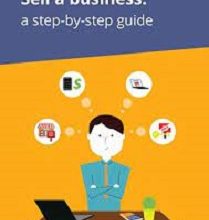
What is employee wellness programs?
According to Investopedia, an employee wellness programs is an organisational strategy for enhancing personal health. Companies frequently provide cash incentives or other resources for employees to be healthy through wellness programmes.
The definition of employee welfare quickly shifted from what it was prior to the epidemic to how businesses now view it. Big-name corporations like “Google” have developing several methods to look after their employees in order to safeguard both their physical and emotional health and to make working from home enjoyable.
The most common concept of employee wellbeing that most people are familiar with is having comfortable break areas or providing mental health days for workers. The COVID-19 pandemic, however, made the importance of employee well-being more more crucial. One of the leading businesses that paid close attention to the mental health of their workers throughout this historic period was Google.
It is hardly surprising that a top company’s approach to maintaining the physical and mental health of its employees changed both before and after the pandemic crisis. Let’s examine Google’s employee welfare plan more closely, both before and after COVID.
3 Crucial Benefits of Employee Wellness Programs
Google’s pre-pandemic employee wellbeing
From culture to a commitment to worker wellbeing
Google had a great staff welfare plan from hiring to the customer retention process before the COVID-19 pandemic. Google’s culture places a strong emphasis on maintaining its employees’ happiness and satisfaction by providing them with a variety of benefits. Managers at Google receive training on how to emphasise the overall wellbeing of all of their direct reports.
Free lunches, free haircuts, discounted texting, hybrid vehicle subsidies, video games, ping pong, free dry cleaning, gyms, nap pods, foosball, and on-site doctors are just a few of the perks that Google employees enjoy.
Although providing these perks and incentives to employees is expensive for Google, the expense of addressing excessive turnover and dissatisfaction would be far higher.
Industry competition promotes a healthy work environment
The tech sector has fierce competition for talent, so keeping your current staff instead of constantly recruiting saves more money and effort. Due of this, Google made every effort to ensure staff well-being before the pandemic began.
Along with physical health benefits, Google also offers mental health help to its employees. Health insurance and counselling sessions are two ways that are made available for this.
Protection of workers’ health during the epidemic
As a result of the government-imposed lockdown limitations, remote working has become more prevalent. Because of this, they have to come up with fresh approaches to support their employees’ mental health when they are working from home and assist them in striking a healthy work-life balance.
The first well-known corporation to let its staff members operate remotely even after the lockout was lifted was Google. The company has acknowledged that the greatest difficulty it had in converting the majority of its workforce to remote work is the workers’ mental health. As a result, Google started implementing several tactics to ensure the welfare of its employees throughout the COVID-19 pandemic. Offering benefits like gyms and swimming pools at the time makes little sense if they can’t go to work.
Lauren Whitt, a Google health manager and resilience lead, has stated that she is preparing for the unpredictability of the scenario.
We began to turn the subject to how to establish new routines, how to change or alternate the setting they are working in, and how to focus on new abilities, habits, and routines in July and August after seeing this issue wasn’t going away.
Allowance of $1,000 for furnishings and equipment for the office
In order to make it simple for its staff to work from home, Google immediately announced that they would provide each employee a $1,000 allowance. Employees were given $1,000 or the equivalent in their local currency if they were working abroad. This was their initial approach to addressing employee welfare.
Remote workers typically have to put some effort into setting up a home office with cosy office supplies. Although employees have access to these conveniences when working in an office, working from home for the first time is different.
An allowance was provided to cover all costs for employees to purchase furniture and other items, such as computers, to establish a suitable working environment in order to keep this in mind and to support their work culture.
Setback days
Google’s reset days, sometimes referred to as Google worldwide days off, were another way the company looked out for the welfare of its staff members throughout the pandemic. This was their strategy for providing their staff with opportunities to rest during the epidemic and care for their mental health. Employees can switch off from work during the reset days, preventing burnout.
The additional paid days off allowed the workers to unwind and take it easy, as the pandemic left many feeling hurried and disoriented. Although the idea of reset days is a nice one, it would be challenging for employees to return to their normal routine at work.
But despite this, Google now offers services that ease the lives of its employees and boost productivity.
Adaptable hours of employment
For their employees, Google also offered flexible working hours and opportunities. One is that Google expanded its offices across the world and gave its employees the option to apply for entirely remote work. This implies that some of their employees could return to the office while others could continue working from home.
Additionally, employees have the option to work up to four weeks a year away from their primary office. Additionally, the business developed concentration hours, which would cut down on internal meetings and provide employees more time to concentrate on tasks.
Videos for “resilience training”
In order to promote the wellbeing of its employees, Google has also made resilience training films available. To offer staff this support, the organisation even employed Lauren Whitt as a health manager and resilience lead.
The business developed brief resilience training videos and expanded its already existing initiatives before distributing them to staff members on a weekly basis. The recordings were made by coaches, players, and psychologists, and it was said that a staff member of theirs was always watching them. In response to concerns about the impact of stay-at-home notice and loneliness on employees’ mental health and wellbeing, the organisation developed staff wellbeing initiatives.
24/7 counselling via video or in-person sessions in a secure location
Google offered mental health therapy before the epidemic, and they continued to do so once their employees had to work from home. To stop the pandemic, they offered all employees access to counselling via video chat around-the-clock or let them meet with counsellors in a secure location.
During the lockdown, workers might request this session any time they felt backed into a corner or under pressure. Google is already aware that since the outbreak, job stress has gotten worse than before. Thus, for a long-term growth goal, the employees’ sense of empathy and sympathy is quite important.
Arrangements for the new normal
Even if the COVID-19 epidemic is still far from over, there is little likelihood that things will return to how they were before the lockdown. As a result, well-known corporations like Google are preparing for the new normal. In this manner, employers can guarantee their workers’ happiness at work as they recuperate from the pandemic.
The initial following a pandemic to establish a hybrid workplace
Following the lifting of the pandemic limitations in various locations, Google was the first firm to continue offering the hybrid workplace arrangement. It is simple to characterise a hybrid workplace as one that offers both in-office and remote workers assistance.
In the initial version of the hybrid return-to-work plan, it was planned for 60% of workers to come in for a few days each week, 20% to work from home, and the remaining 20% to work in new offices. According to research, after the epidemic, more than half of employees desire to work a blended schedule.
Gather information and decide depending on the needs for employee support
Google also created and distributed employee pulse surveys. These polls are designed to find out how employees feel about the jobs, interactions, and relationships that are part of their employment. It also entails figuring out what their workers will require during and after COVID time and getting ready for a new kind of employee involvement in a hybrid workplace.
These pulse surveys also take into account the health concerns of the personnel. The management team would be aware of the general health of every employee and prepare for emergency assistance if needed.
Can other businesses adopt Google’s strategies?
Since Google is regarded as one of the greatest workplaces, it is understandable that other businesses would like to adopt their policy and offer employee welfare services both during and after the pandemic.
Hybrid workplaces and remaining safe at work have now become standard in many businesses, including Google, as pandemic limitations are being tightened and the new normal is being formed.
The Bottom Line
The Google employee wellness programs is one of the most successful and long-running in the world. It has been a trendsetter for other companies when it comes to employee benefits, health services, and workplace safety. Even during these difficult times, they continue to offer their staff various mental health services and assistance. As we return to work post-pandemic, we can all learn a lot from Google’s example.
Some related FAQs:
-
What are the examples of employee wellness programs?
- weight loss program
- stress reduction program
- nutrition education
- offer classes to help them deal with insomnia
2.How to implement my company employee wellness programs?
- assess your employee need
- set the goal
- have dedicated wellness team/ colleagues
- study your budget
- provide options by presenting them your planning
3. How Much Do Wellness Programs Cost?
- Employee wellness programs typically cost each employee between $3 and $7.5 per month (or roughly $36 to $90 annually). The contemporary benefits of a work-sponsored programme account for a large portion of those expenditures.
If you are looking for someone to help you carry out this difficult task: Click button below to contact Engagelife ( Your trusted employee wellness training partner ! )
[button color=”blue” size=”medium” link=”https://engagelife.com.my/services/” icon=”” target=”true” nofollow=”false”]Check out their services [/button]
Article published by RecaBlog




